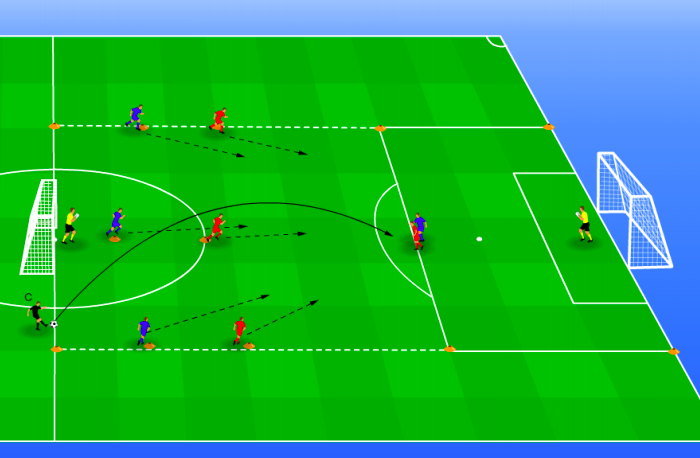Inviting football behavior instead of obliging it

Many coaches use rules in training drills that force players to show certain behavior. Examples are a maximum number of touches or certain zones which players may or may not enter. What downsides does this have? And what are the main alternatives?
Limited touches
The most used example of ‘obliging certain football behavior’ is a position game such as 4v4 + 3 with a maximum of two touches for the four players in possession and one touch for the three neutral players. This rule is used to ensure that players increase their speed of action. Obviously, this is a result of the rule. Players are forced to show the desired behavior (fast speed of action) by introducing a rule (a limited number of touches).
As a coach, you also expect players to use a high speed of action in matches. However, they’ll always have the possibility of using an unlimited number of touches. The pressure of opponents is the main factor for the need to think and play fast. Therefore, this pressure from opponents invites them to play faster. The ‘response’ is the same (higher speed of action), the ‘stimulus’ is different (pressure from opponents instead of a limited number of touches).
Stimulating behavior
Is it possible to invite a certain type of behavior more naturally in training sessions? Yes, there definitely are several ways to stimulate the ‘right’ football actions instead of obliging them. In fact, this leads to much better in-game decisions in the long term.
Let’s get back to the position game 4v4 + 3 as an example. How can you make sure the players’ speed of action increases without using the limited touches rule? The easiest way to do so is by decreasing the pitch size, which invites players to play faster. Another good option is by actively coaching the defensive team to press better, which reduces time and space on the ball for the seven players in possession.
This simple example shows that it’s not always necessary to impose additional rules to stimulate the football behavior you expect from your players. If possible, it’s always preferred to let it occur ‘naturally’.
Exceptions
Obviously, there are some situations where this is very difficult to do. An example is a 3v3 + 2GK with the objective of improving the football fitness of the players. If they use man marking as a defensive strategy, the goal keeper will be the spare man in possession in almost every situation. The option to pass the ball back infinitely could take a lot of speed out of the game.
As a coach, you could stimulate passes forward, or let both teams use the formation 1:2:1 so there is a spare man at the back. But imposing an additional rule could be a good option in this situation. Three possibilities are listed below.
- A maximum of 1 pass back to the goalkeeper
- One-touch only for the goalkeeper.
- The goalkeeper can have the ball at his feet for a maximum of three seconds.
Tracking back
A good example of a drill in which players are invited to perform fast is this 4v1 + 2GK with three defenders tracking back, trying to make it a 4v4 + 2GK. Because of the different starting positions, the red team is stimulated to attack towards goal very fast.
